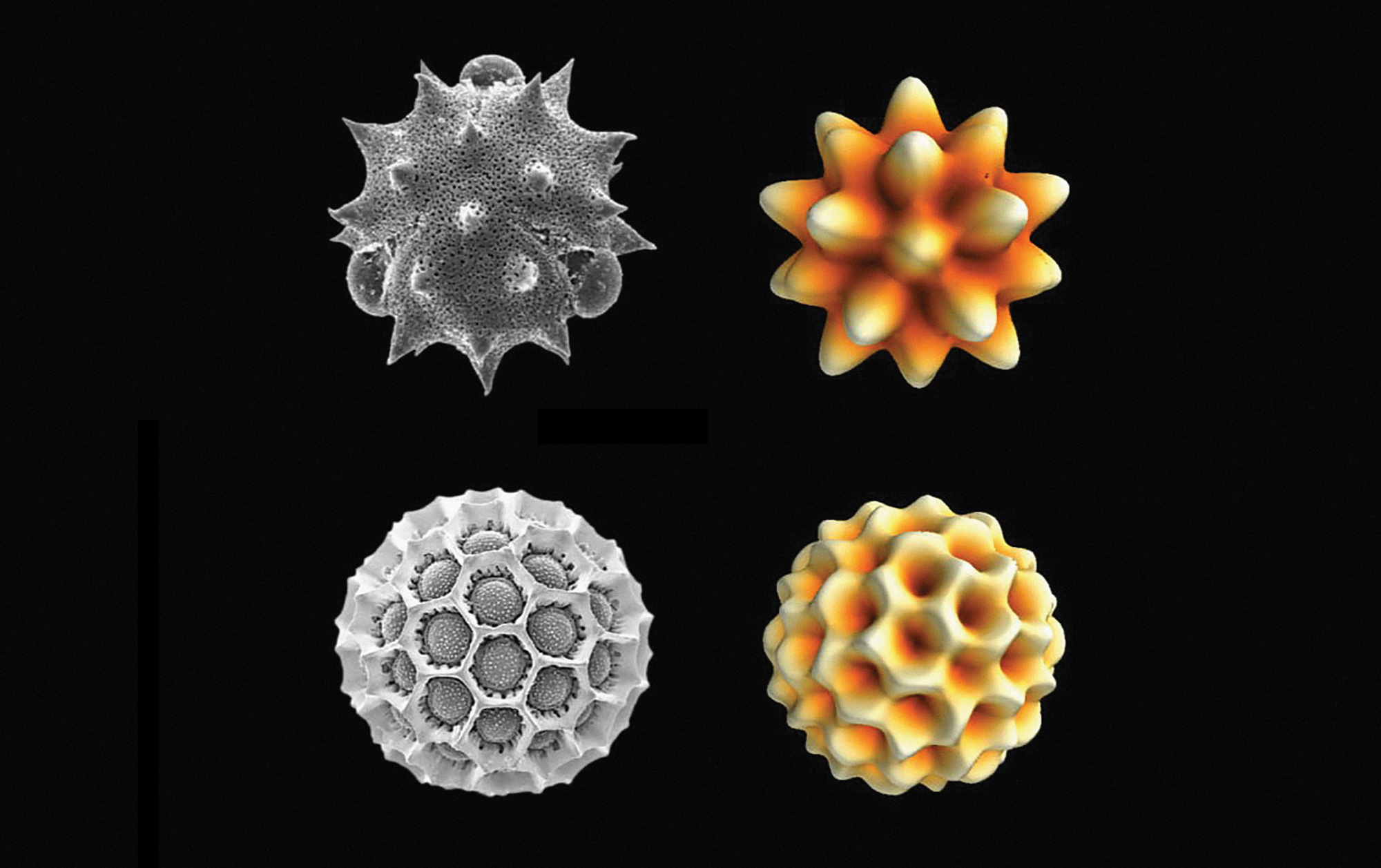Last Look
By developing the first theoretical physics-based framework for how pollen patterns form, researchers from the Department of Physics and Astronomy have enabled scientists to study a large class of biological materials, including the cell walls of plants and the scales of butterfly wings.

Pollen grains Galium wirtgenii (top) and Gomphrena globose, shown as scanning electron microscopy images alongside the simulation of the physical model. By developing the first theoretical physics-based framework for how pollen patterns form, researchers from the Department of Physics and Astronomy have enabled scientists to study a large class of biological materials, including the cell walls of plants and the scales of butterfly wings. Graduate student Asja Radja was the first author of the study, working with fellow graduate student Eric M. Horsley. Former postdoc Maxim O. Lavrentovich and Alison Sweeney, Associate Professor of Physics and Astronomy, were co-lead authors of the study.




